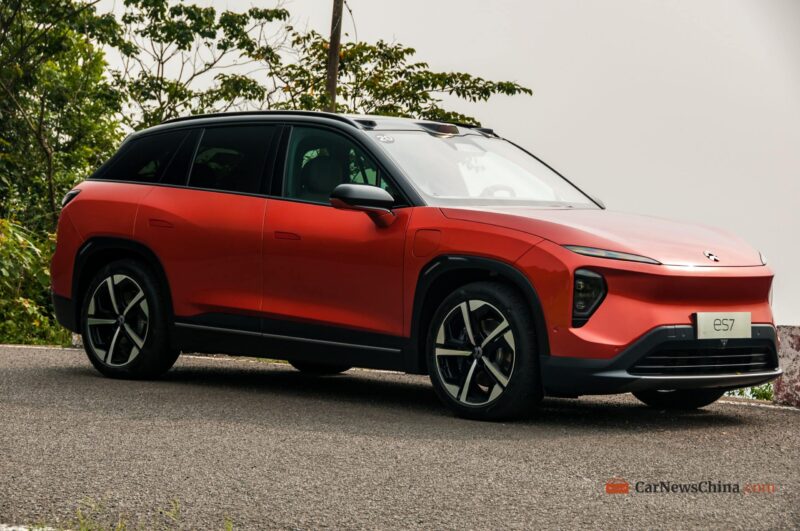Time to kill the Nio ES7
Nio has a tendency to spring product surprises on us unsuspecting observers. At Nio Day 2021 the new ET5 was shown and from that we believed the next car to launch on the new NT2.0 platform would be the small sedan. But that would be too simple for Nio and so the actual next car was the ES7, or EL7 as it’s known in Europe.
Deliveries began in August 2022 around a month before the ET5. And when I got to do the media test of the car in July it was as if the car had appeared from nowhere, there was no official unveiling at an Auto Show or a Nio Day, although the cancellation of the Beijing Show in April that year had probably not helped!
Slightly bigger (62 mm longer) than the first generation ES6 (length 4,850 mm) but also a five seater I felt it was safe to assume that the car was the second generation replacement. After all every first generation car was an even number – ES6, EC6, ES8 – and every known second generation car was an odd number: ET5, ET7, ES7.
Then came Nio Day 2022, and I was invited a few days before to do a preview shoot of two new cars. These turned out to be the EC7 and the second generation ES8. Wait a moment that’s an 8 not ES9, although I was told by Nio people that they had considered the name ES9. And so what was the next Nio car I was invited to test drive in June 2023, yes that’s right a second generation ES6 again without being displayed anywhere first. I hope you’re keeping up with all that!
So obviously the ES7 wasn’t a second generation ES6 after all! The real second generation ES6 has gone on to be Nio’s best seller, selling 6,943 in December 2023, accounting for around 39% of Nio sales that month. On the other hand the ES7 managed all of 266 about 1.5% of total Nio sales for the month. The best month ever for the ES7 was November 2022 when the car managed sales of 4897 but since April last year, about the time the new ES6 became known, the model has been in terminal decline. So is it time to kill the ES7?
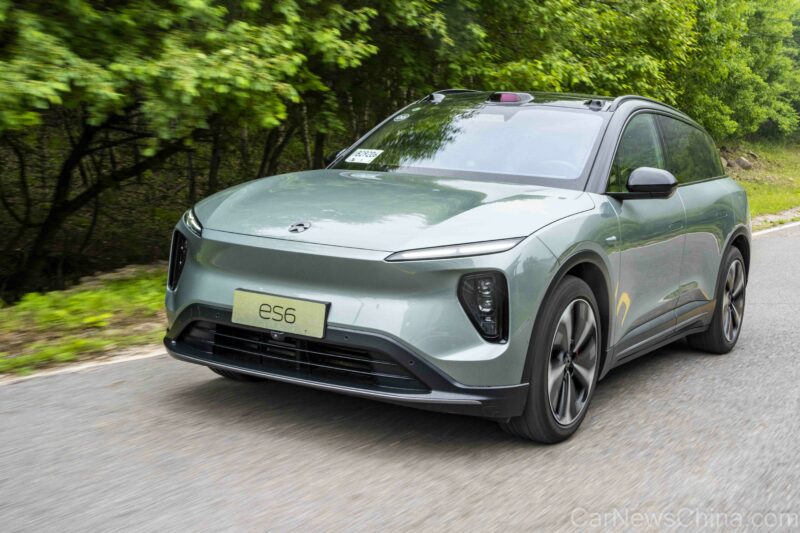
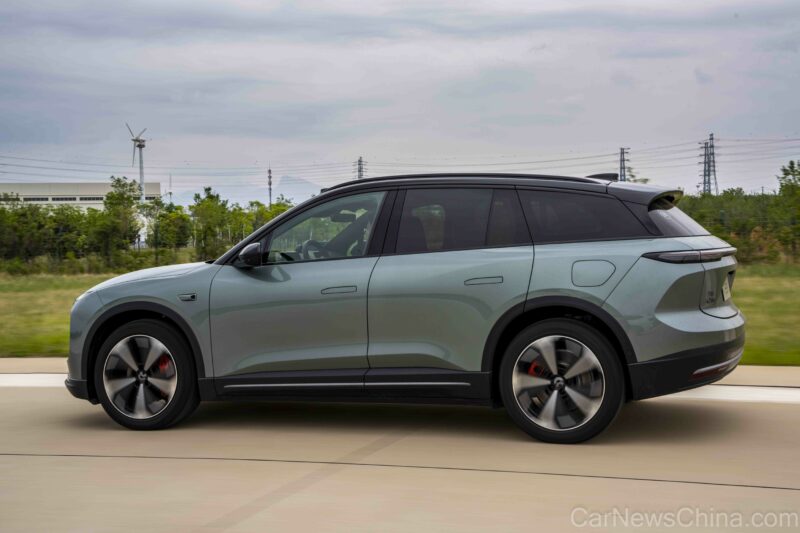

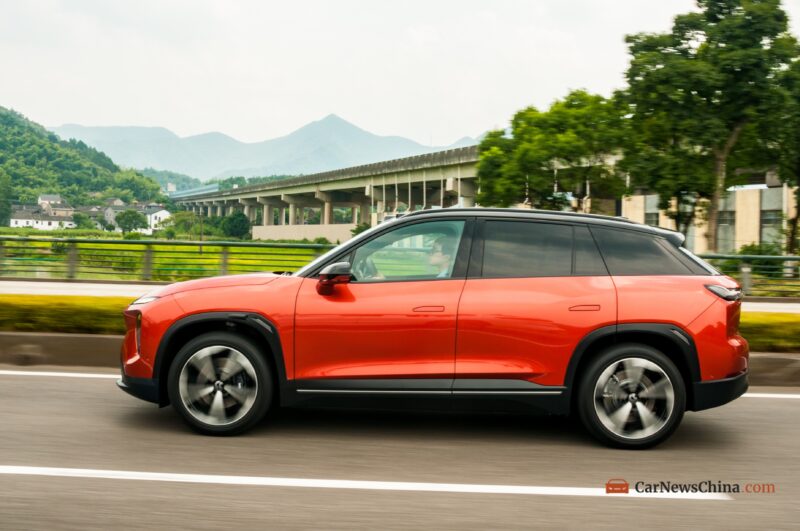
Take your positions
Positioning wise the ES7 is placed a bit higher than the ES6 but does it really offer anything that the ES6 doesn’t have? Yes, it is a bit bigger, but both are five seaters and we’re not talking about the kind of size difference between say a BMW X3 and X5. The ES7 is 4912 mm long whereas the ES6 is 4854 mm while there is a 214 mm difference between the two BMW models.
Price is one of the clearest differentiators with the ES7 starting at 468,000 yuan (65,000 USD) when launched which has since dropped to 438,000 yuan (60,850 USD) whereas the ES6 is now a far more affordable 338,000 (46,950 USD). The ES6 was also 30,000 yuan (4,150 USD) more expensive at launch, so despite recent price drops there is still a 100,000 yuan (13,900 USD) difference.
So given the small size difference is the ES7 really worth so much more money? What you get with the ES7 over the ES6 is a more luxurious and faster car, although that speed comes with a caveat.
Spot the difference
The first generation ES6 came with air suspension but the second generation makes do with multi-link both front and rear. There is though CDC which can make up to 500 adjustments per second and Nio has created an intelligent chassis controller (ICC) which Nio claims is China’s first ICC with full-stack capabilities developed in-house. On the other hand the ES7 does get air suspension and so overall provides a much smoother ride than the ES6, which does feel bumpy for rear passengers.
One element I had thought was a signature of the second generation Nio cars was Karuun, a sustainably produced rattan based material, as a veneer on certain cabin surfaces. However, it was conspicuously absent from the ET5, the cheapest Nio model to date. On the ES6, the cheapest Nio SUV it does make a return but is limited to a separator for the two levels of the dashboard and in a small insert on the back of the center console for rear passengers. With the ES7 the material is used far more liberally in the cabin and the general feel is more upmarket.

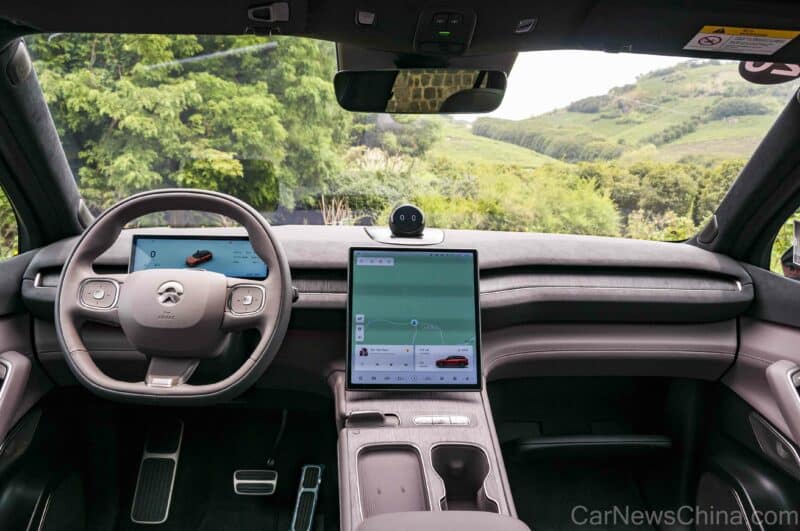
Rear seat passenger comfort is definitely better in the ES7. Not only are the rear seats electrically adjustable for rake but they also get air cushions. The ES6 as standard only has seat heating for the front seats whereas the ES7 gains ventilation and massage functions which are optional extras on the cheaper car. Furthermore the back seats have heating and massage but on the ES6 these are optional extras but also available is ventilation which the ES7 doesn’t have.
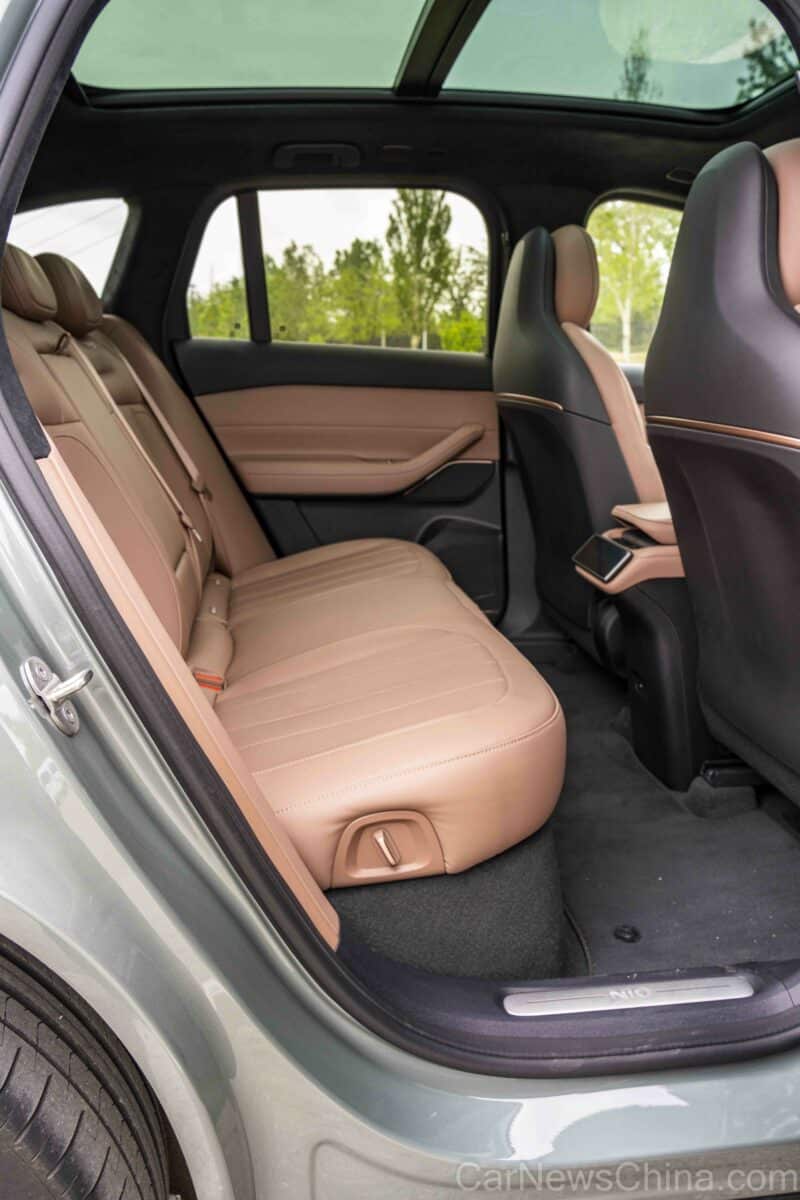
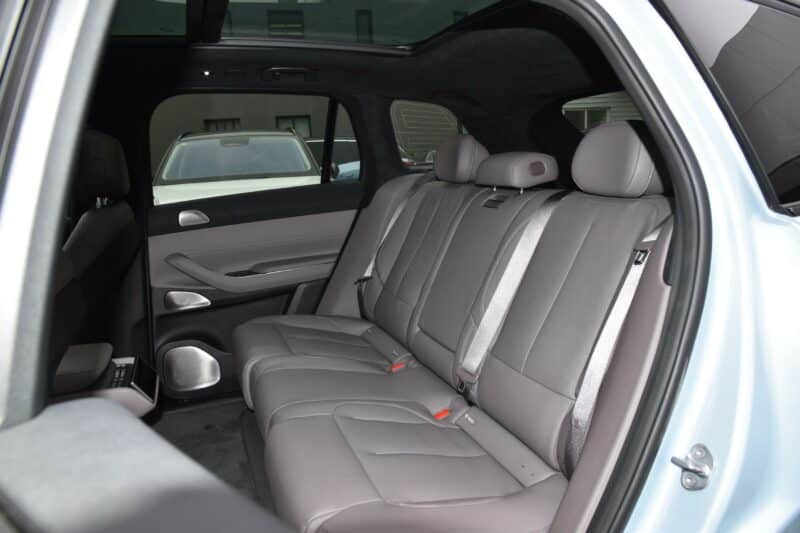
I guess you are thinking by now OK I get that the ES7 is more luxurious, but not so fast the ES6 actually has a better ‘queen seat’ as Nio refers to the front passenger seat. Electrically controlled it has 22 positions including a one button setting for what Nio describes as ‘zero gravity’ with a 120° angle.
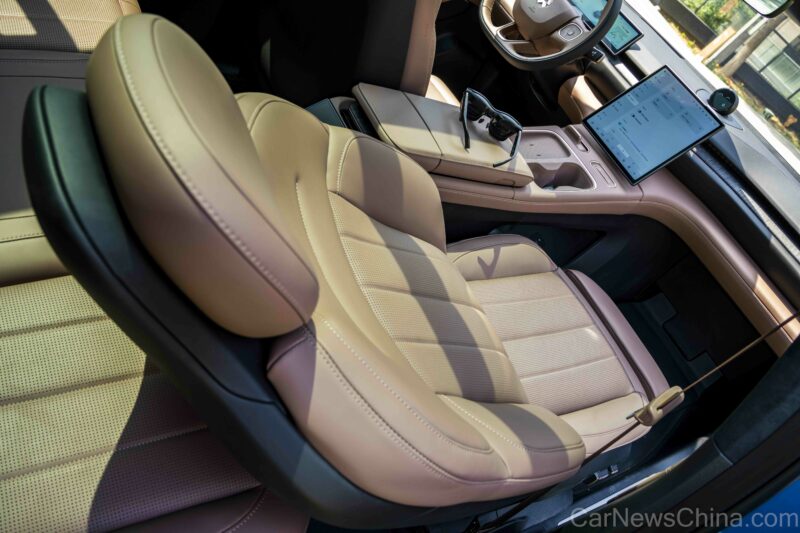
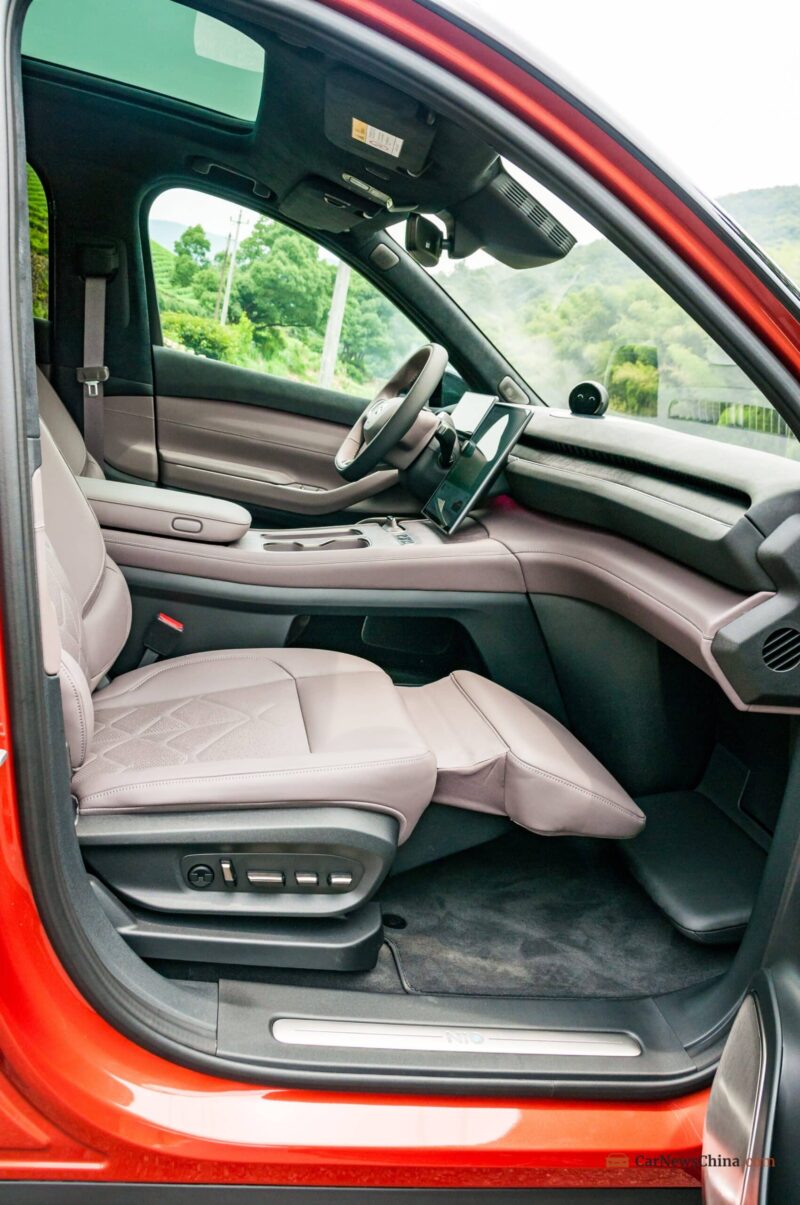
In a straight line the ES7 has faster acceleration at 3.9 seconds to 100 km/h (62 mph) whereas the ES6 takes 4.5 seconds. So yes the ES6 is slower but will anyone really notice the difference plus the ES6 is much faster than the first generation version. I drove both the new cars on some winding mountain roads, the ES7 around Ninghai, Zhejiang and the ES6 around Shuiguan at the Great Wall in Beijing. Both handled well.
There is, though, a clear difference in the feel of the cars. Of all the Nio cars the ET5 drives best, I haven’t driven the ES6 back to back with the ET5 but it seems almost as good and may even be its equal. The steering is very well weighted and like the ET5 it has a rear wheel drive bias. With the second generation Nio cars while all are dual motor in many situations they turn off the smaller secondary motor only using it for acceleration or high speed driving. Where the primary motor is mounted depends on the model. So far the ET5, ES6 and EC7 are the only ones where it is mounted at the rear. These all add up to make the ES6 the superior drive and why I said the ES7 is faster with a caveat. Essentially the ES7 is faster in a straight line but throw in some curves and you may find the ES6 beating it.

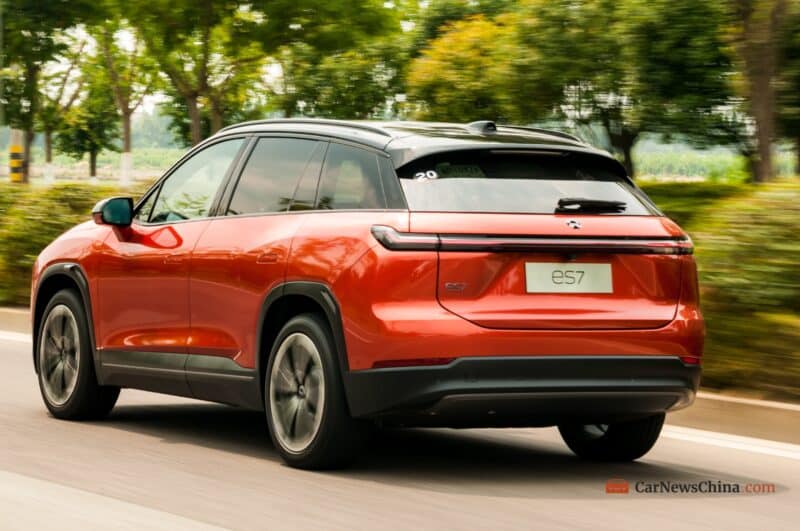
And now for the death sentence. While both the ES6 and ES7 are second generation Nio cars the ES6 is more second generation than the ES7. I mentioned earlier that the ES7 appeared to come out of nowhere, there were a few spy shots and then bam I was being invited for a test drive. Insiders say the car was rushed through to production. From a product perspective Nio which until the ET7 had only been known for SUVs was taking a gamble launching the second generation with a saloon and that bet would be doubled if the second new car was the ET5, in short Nio needed a second generation SUV and soon. So while the ES7 does indeed use the new tech platform so providing features like the infotainment and autonomous driving the mechanical platform is still the first generation. The ES6 on the other hand is truly fully second generation.
Aim, fire
Twitter is full of Nio fanboys, some almost as rabid as Tesla ones, very keen to talk the virtue of Nio shares but for the last few years they’ve been perennially disappointed by the lack of price movement – at least in a northerly direction, Nio seems quite good at pushing in the other direction. No matter the virtues of battery swapping there is a huge problem with Nio and that’s sales. The brand is completely dependent on the ES6 and ET5 (including the touring) for sales. They together made up 69% of December 2023’s total. While it is true that Nio needs more models to get sales, what they need is ones with less overlap like the ES6/ES7 and EC6/EC7. There needs to be a clear difference between them both in terms of size and style.
Overall while the ES7 does have some advantages, the ES6 is the better car and there simply isn’t enough that makes the ES7 different to warrant its existence. So in order to have clearer more streamlined model line up offer an air suspension option on the ES6 and an interior upgrade package and pull the trigger on the ES7. The ES7 has had its day, it stood, but did not deliver.



